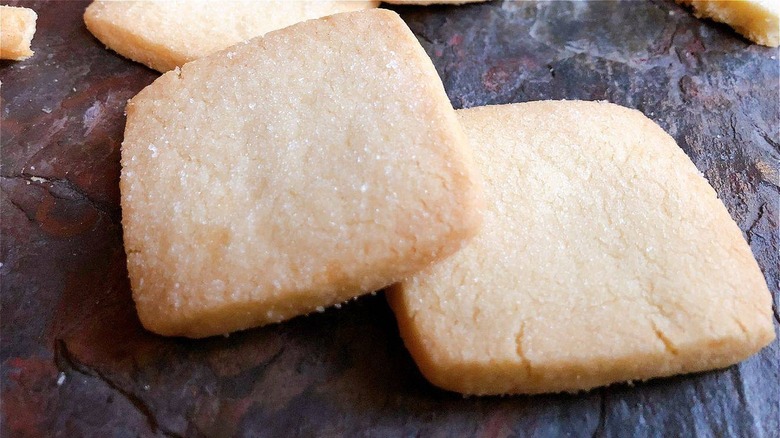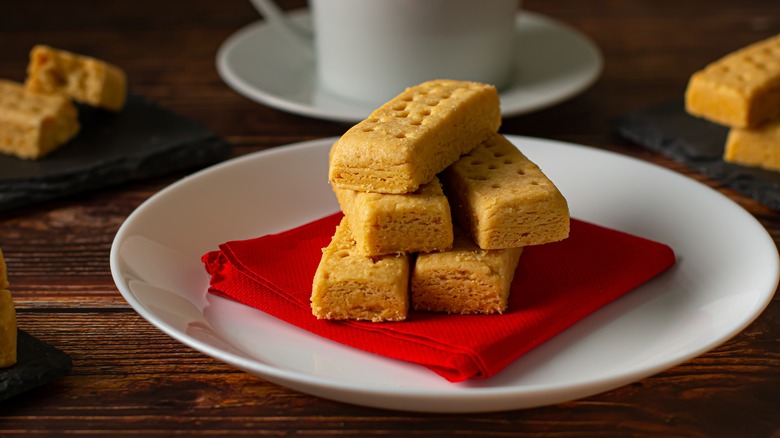Why A Cheese Grater Is Perfect For Shortbread Dough
Shortbread is a Scottish cookie (or biscuit, depending on what side of the pond you're from) that has been around since medieval times. Leftover bread dough was baked slowly to become a biscuit, and eventually, butter and sugar took the place of the yeast, giving us a sweetened shortbread, per Historic UK. Because of all the butter and sugar in the recipe, it was an expensive treat, brought out for special occasions like weddings or the holiday season. You can still expect to ring in the New Year by eating shortbread in Scotland.
A shortbread recipe is remarkably easy to follow and uses ingredients found in most home pantries. Make sure not to handle the dough too much or overmix it, or you'll end up with a tough cookie instead of one with a light and crumbly texture. The word "short" is used to describe something as brittle or crumbly, by the way, which is why you hear Paul Hollywood ask for a "short-textured" biscuit (via The Guardian). The base recipe for shortbread is also endlessly adaptable and can host many add-ins like caraway seeds, cinnamon, lemon zest, and ginger. It forms the base for millionaire's shortbread and can even be used as a pie crust or for your Christmas cut-out cookies. Before you whip some up during a holiday baking session, though, you'll want to know one useful trick that makes shortbread even better.
The hack that will elevate your shortbread biscuits
If you want to up your shortbread game, there is one trick that has been used by pastry chefs and home cooks alike: freezing and then grating your shortbread dough. It's a trick you see employed in a number of historic recipes. What's all the fuss about?
When you freeze and grate your shortbread dough directly into your baking pan instead of simply forming the fresh dough into a flat crust, you create little nooks and crannies of air — which you should avoid pressing into the pan. The result, instead of a densely compacted mass of shortbread, is a light, crisp, and textured layer of shortbread that Epicurious describes as "frilly" and "airy," or like a crumble topping on a cake. It's a fun take on a traditional shortbread biscuit that is a delight to eat.
Chef Michelle Polzine stumbled across the method when researching Eastern European cookbooks for her San Francisco restaurant 20th Century Cafe. This method is used in various Central and Eastern European recipes, such as Poland's pleśniak cake and Hungary's omlós teasütemény, where a layer of fruit jam is spread between grated layers of shortbread. The next time you fancy a bit of shortbread for your afternoon tea, try freezing and grating the dough for that delectable texture.

